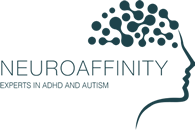WHAT IS ADHD?
What Exactly is ADHD?
Attention-Deficit/Hyperactivity Disorder (ADHD) is a neurodevelopmental disorder that affects both children and adults. It is more prevalent than many realise, affecting about 5% of children and 2.5% of adults globally. ADHD is characterized by consistent patterns of inattention, impulsivity, and/or hyperactivity that disrupt daily life and development.
In simpler terms, individuals with ADHD may struggle to concentrate on tasks, may act without thoughtful consideration, and may display hyperactivity that interrupts their own lives or the lives of others. It is important to note that ADHD is not a sign of laziness or lack of effort; instead, it is recognised as a medical condition with neurological origins.
Gaining a clear understanding of ADHD is the first step toward effectively managing it. We are committed to providing you with a solid foundation of information based on scientific evidence, enabling you to make informed decisions as you move forward.
Causes of ADHD?
The exact cause of ADHD remains unclear. While there have been speculations that it may develop due to factors such as excessive sugar consumption, excessive television watching, or chaotic living conditions, research has not found evidence to support these theories.
Current understanding suggests that genetics may contribute to the development of ADHD. Additional factors being researched include:
- Brain injury
- Exposure to toxins, such as lead, during pregnancy or in early childhood
- Alcohol or tobacco use during pregnancy
- Premature birth or low birth weight
Despite ongoing research, many aspects regarding the causes of ADHD are still not fully understood.
Common Behaviours Associated with ADHD

Inattention
Difficulty staying focused, being easily distracted, and poor organisational skills.

Hyperactivity
Constant movement, excessive talking, and trouble completing tasks.

Impulsivity
Interrupting others, taking risks without considering consequences.
It’s essential to recognise that everyone experiences ADHD differently. For instance, symptoms may manifest differently in boys and girls.
Boys often display more hyperactive behaviours, while girls may exhibit subtler inattentiveness.
Types and Symptoms of ADHD?
Each type of ADHD is associated with specific characteristics, primarily involving inattention and hyperactive-impulsive behaviours.
1
Inattentive Type
2
Hyperactive-Impulsive Type
3
Combined Type
INATTENTIVE TYPE
If you have this type of ADHD, symptoms of inattention outweigh those of impulsivity and hyperactivity. You may occasionally struggle with impulse control or hyperactivity, but these are not the primary traits. This type tends to be diagnosed more frequently in girls than in boys.
Individuals experiencing inattentive symptoms may:
- Miss details and easily become distracted
- Get bored quickly
- Struggle to focus on a single task
- Have difficulty organising thoughts and learning new information
- Misplace essential items needed to complete tasks
- Appear as if they are daydreaming
- Process information more slowly than others
- Have trouble following directions


HYPERACTIVE-IMPULSIVE TYPE
This type is characterized by significant impulsivity and hyperactivity, with some symptoms of inattention present but less pronounced. Children with hyperactive-impulsive ADHD can often disrupt classroom environments, making learning challenging for themselves and their peers. This type is more commonly diagnosed in boys than in girls.
Individuals with hyperactive-impulsive symptoms may:
- Fidget, squirm, or feel restless
- Have difficulty remaining seated
- Talk excessively
- Touch and play with objects inappropriately
- Struggle to engage in quiet activities
- Exhibit constant movement or impatience
- Act impulsively without considering the consequences
- Blurt out answers or inappropriate comments
Combined Type
If you have the combined type of ADHD, your symptoms encompass both inattentive and hyperactive-impulsive behaviours. Most individuals, whether or not they have ADHD, may show some level of inattention or impulsivity, but those with ADHD tend to exhibit these behaviours more frequently and severely, interfering with daily functioning at home, school, work, and in social settings. Symptoms can evolve over time, which means your type of ADHD may also change. While ADHD can pose lifelong challenges, various treatments, including medication, can significantly enhance your quality of life.

Who is Affected?
Attention-Deficit Hyperactivity Disorder (ADHD) was previously thought to primarily affect children and adolescents. However, it is now understood that many individuals with ADHD do not “outgrow” the condition, and it can persist into adulthood. ADHD affects both males and females across all age groups, social statuses, intelligence levels, and abilities.
Many adults begin to question their past and present behaviours, as well as the challenges and progress they have encountered throughout their lives. Some may suspect that they need support without realising that they may be experiencing the effects of ADHD.
Others may become aware of ADHD through research or discussions and start to wonder if this diagnosis could explain their difficulties. This curiosity is often sparked by the realisation that one of their children has ADHD, leading them to recognise similar symptoms in themselves. Upon reflection, they may realise they have lived with these symptoms for years but have managed to cope without proper understanding or support.
ADHD can also co-occur with other mental health conditions that exhibit similar behavioural traits, which may result in misdiagnosis or a failure to recognize ADHD as the underlying issue.
The Impact of ADHD
Attention-Deficit Hyperactivity Disorder (ADHD) is a condition that affects many people throughout their lives. It can make it hard for individuals to focus, control their impulses, and manage their behavior. For children, ADHD can lead to challenges in school and difficulty making friends. As they grow into adults, these issues can continue, affecting their work and personal lives. ADHD can also impact a person’s emotions and self-esteem, making it important for those affected to get the understanding and support they need. Here are some key areas where ADHD can affect individuals:
Behavioural Impact

Inattentiveness
Difficulty concentrating on tasks, easily distracted, and often forgetful.

Hyperactivity
Excessive movement, restlessness,
and difficulty staying still.

Impulsivity
Acting without thinking, interrupting others,
and difficulty waiting for their turn.
Academic and Occupational Impact

Underachievement
Struggles with schoolwork, maintaining consistent performance, and meeting academic expectations.

Time Management
Challenges with organizing tasks, managing time effectively, and meeting deadlines.

Workplace Issues
Difficulty following instructions, staying on task, and meeting employer expectations.
Social Impact

Relationships
Problems with social interactions, maintaining friendships, and understanding social cues.

Behavioural Problems
Increased likelihood of oppositional defiant disorder (ODD) and conduct disorders.
Mental Health Impact

Anxiety and Depression
Struggles with schoolwork, maintaining consistent performance, and meeting academic expectations.

Substance Abuse
Increased risk of substance abuse
and addiction.
Daily Life Challenges

Compulsive Eating
Difficulty setting limits on behaviour,
leading to overeating.

Anxiety
Persistent worry and stress.

Substance Misuse
Increased risk of drug and alcohol misuse.

Chronic Stress
Higher stress levels leading to physical
health issues.

Sleep Problems
Difficulty with sleep patterns and quality.

Employment Problems
Struggles with organization, punctuality,
and task completion.

Trouble with Deadlines
Missed deadlines and poor time management.

Impulsive Spending
Difficulty controlling spending habits.

Employment Problems
Problems with managing
finances and paying bills.

Screen Addiction
Difficulty managing screen time
and staying focused.
Symptoms & Disorders that Occur Alongside ADHD
ADHD often coexists with other conditions, complicating diagnosis and treatment. Here are some common symptoms and disorders that frequently occur alongside ADHD:
1
Mood Disorders
- Depression: Symptoms include persistent sadness, loss of interest in activities, changes in appetite or weight, and fatigue.
- Anxiety: Symptoms consist of excessive worry, physical symptoms like rapid heartbeat and sweating, and difficulty concentrating.
2
Behavioural Disorders
- Oppositional Defiant Disorder (ODD): Characterized by negative, hostile, and defiant behaviour toward authority figures.
- Conduct Disorder: Involves aggressive behaviour, destruction of property, and violation of rules.
3
Learning Disabilities
- Dyslexia: Difficulty with reading and language processing.
- Dyscalculia: Difficulty with math and number-related concepts.
4
Autism Spectrum Disorder (ASD)
- Social Communication Challenges: Difficulty with social interactions and understanding social cues.
- Repetitive Behaviours: Engaging in repetitive movements or routines.
5
Sleep Disorders
- Insomnia: Difficulty falling or staying asleep.
- Sleep Apnoea: Characterized by breathing interruptions during sleep.
6
Eating Disorders
- Binge Eating Disorder: Involves eating large amounts of food in a short period, often without control.
- Anorexia Nervosa: Restrictive eating combined with an intense fear of gaining weight.
7
Obsessive-Compulsive Disorder (OCD)
- Obsessions: Persistent, unwanted thoughts.
- Compulsions: Repetitive behaviours performed to relieve anxiety.
8
Sensory Processing
Disorder
- Over-sensitivity: Strong reactions to sensory stimuli like sounds, lights, or textures.
- Dyscalculia: Difficulty with math and number-related concepts.
9
Substance Use
Disorders
- Alcohol and Drug Abuse: Increased risk of developing substance use disorders.
These co-occurring conditions can make managing ADHD more challenging, but with proper diagnosis and treatment, individuals can receive comprehensive support.
Positive Aspects of ADHD
Attention Deficit Hyperactivity Disorder (ADHD) is often viewed through the lens of its challenges and difficulties. However, it’s important to recognize that ADHD also comes with a host of positive attributes and strengths that can be harnessed for personal and professional success. People with ADHD often exhibit unique qualities such as creativity, hyperfocus, high energy, adaptability, and resilience. By understanding and embracing these positive aspects, individuals with ADHD can thrive in various aspects of life. Below are some of the positive aspects often associated with ADHD:
1
Creativity and Innovation
Out-of-the-Box Thinking:
- Unique Problem-Solving: Individuals with ADHD often approach problems from unconventional angles, leading to innovative solutions that others might not think of.
- Creative Professions: Many people with ADHD thrive in creative fields such as art, music, writing, and design. Their ability to think differently can result in groundbreaking work.
- Inventiveness: The capacity to see connections between seemingly unrelated ideas can lead to new inventions and creative projects.
2
Hyperfocus
Intense Concentration:
- Productivity: When engaged in tasks they are passionate about, individuals with ADHD can enter a state of hyperfocus, allowing them to work for long periods with high efficiency.
- Deep Learning: This intense concentration can lead to a deep understanding and mastery of subjects or skills that interest them.
3
Enthusiasm and Energy
High Energy Levels:
- Motivational Presence: The natural enthusiasm and energy of individuals with ADHD can be infectious, inspiring and motivating those around them.
- Dynamic Engagement: Their energetic approach to life often makes them dynamic and engaging team members, bringing vitality to group projects and activities.
4
Adaptability and Resilience
Flexibility:
- Adapt to Change: Individuals with ADHD are often adept at handling unexpected changes or disruptions, making them valuable in fast-paced or dynamic environments.
- Resourcefulness: Their ability to think on their feet and adapt quickly can be an asset in problem-solving and crisis management.
5
Strong Interpersonal Skills
Empathy:
- Understanding Others: Many people with ADHD are highly empathetic, able to understand and share the feelings of others, which makes them compassionate friends and colleagues.
- Building Connections: Their sensitivity to others’ emotions can help them build strong, meaningful relationships.
6
Spontaneity and Adventure
Love for New Experiences:
- Exploring the Unknown: Individuals with ADHD often have a strong desire to explore new places, try new activities, and take on new challenges, adding excitement to their lives.
- Spontaneous Fun: Their spontaneous nature can lead to unexpected adventures and memorable experiences.
7
Problem-Solving Skills
Resourcefulness:
- Creative Solutions: The ability to come up with creative solutions to problems, often thinking outside the box.
- Quick Thinking: Their ability to think quickly on their feet can be an asset in fast-paced or dynamic environments, allowing them to respond effectively to challenges.
8
Hyperactivity as a Strength
Physical Energy:
- Athleticism: Many individuals with ADHD excel in physical activities and sports due to their high energy levels and physical agility.
- Engagement in Activities: Their need to stay active can lead to involvement in various sports and physical activities, contributing to overall health and well-being.
9
Risk-Taking
Calculated Risks:
- Entrepreneurial Spirit: The willingness to take risks can drive entrepreneurial endeavours, leading to innovative business ventures and opportunities.
- Courage: Their boldness can help them face challenges head-on and embrace opportunities that others might shy away from.
10
Passion and Determination
Drive:
- Pursuing Goals: When passionate about a goal, individuals with ADHD often show incredible determination and perseverance, driving them to achieve success.
- Commitment: Their intense focus and passion can lead to a strong commitment to their interests and projects.
These positive traits can be harnessed and celebrated, turning ADHD into a source of strength and success. Embracing these qualities can help individuals with ADHD thrive in various aspects of life. By focusing on these strengths, we can shift the narrative around ADHD from one of challenge to one of opportunity and potential.
Busting the Myths
The internet is a double-edged sword: while it offers a wealth of information, it also propagates various myths and misconceptions about ADHD. At Neuroaffinity we address some common myths associated with the disorder:
| MYTH | FACT |
|---|---|
| ADHD doesn’t Exist | The idea that ADHD is not a real condition is damaging, as it dismisses the experiences of those affected. References to ADHD date back to 1775, and over 100,000 scientific articles provide evidence of its validity. ADHD meets the criteria for mental health disorders, indicating serious challenges in attention and behavioural control, supported by neuroimaging research showing impaired prefrontal cortex functioning. |
| People with ADHD can’t Concentrate | It is a common misconception that individuals with ADHD cannot concentrate. While distractibility is a symptom, people with ADHD can focus intensely on tasks they find engaging, experiencing moments of hyper-fixation where they may lose track of time. |
| ADHD is just an excuse for Laziness | ADHD can appear as a lack of willpower, but this is misleading. The disorder arises from neurological processes that individuals cannot control. Neural messages related to interest and motivation can be less effective for tasks deemed uninteresting, making those with ADHD seem unmotivated. |
| ADHD is the result of Bad Parenting | ADHD is not caused by poor parenting. This myth stems from associating misbehaviour with ADHD. Research indicates that ADHD symptoms are genetically influenced and affected by environmental factors early in brain development, such as complicated births and exposure to toxins. |
| Only boys have ADHD | About 4.2% of girls have been diagnosed with ADHD, but boys are diagnosed two to three times more often, primarily due to historical research focusing on boys' symptoms, particularly hyperactivity. Girls are more likely to exhibit inattentive behaviours, which may be overlooked. While research on ADHD in females is increasing, we are still assessing whether current statistics accurately reflect incidence rates or underreporting. |
CONTACT US TODAY
Connect with qualified specialists through our quick and streamlined online or face to face assessment process.
Experience the perfect blend of expertise and convenience.











